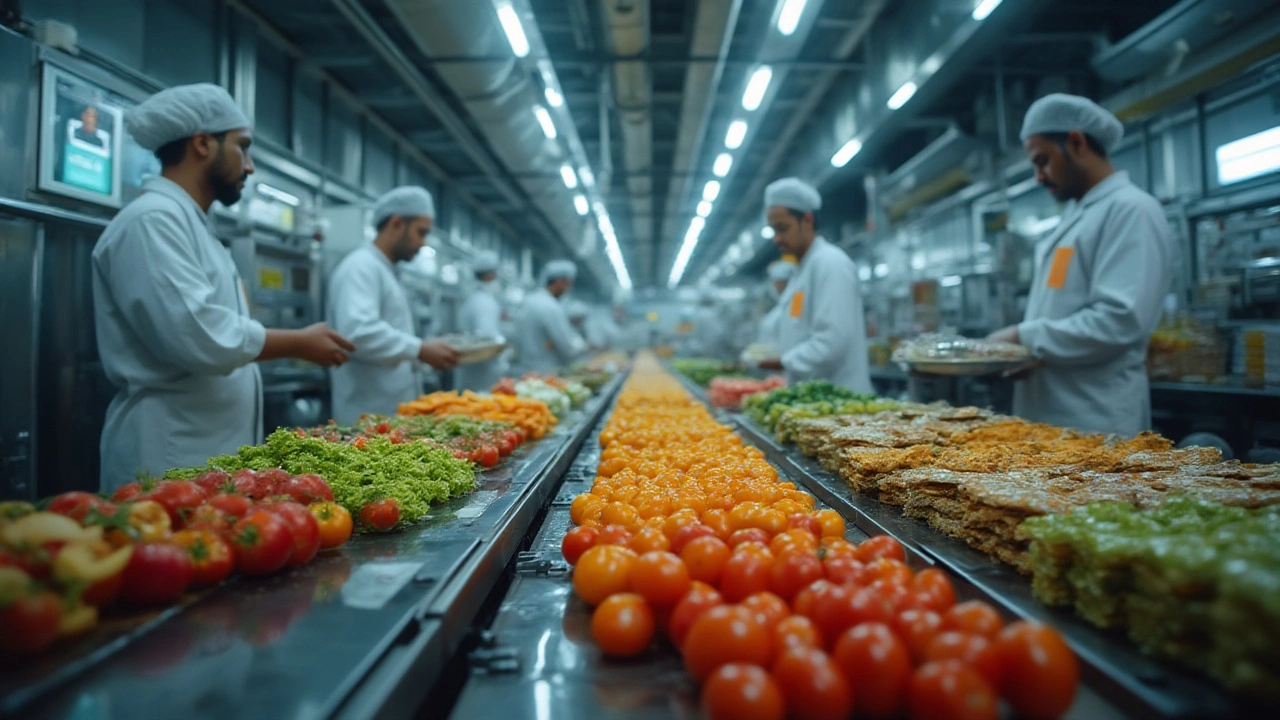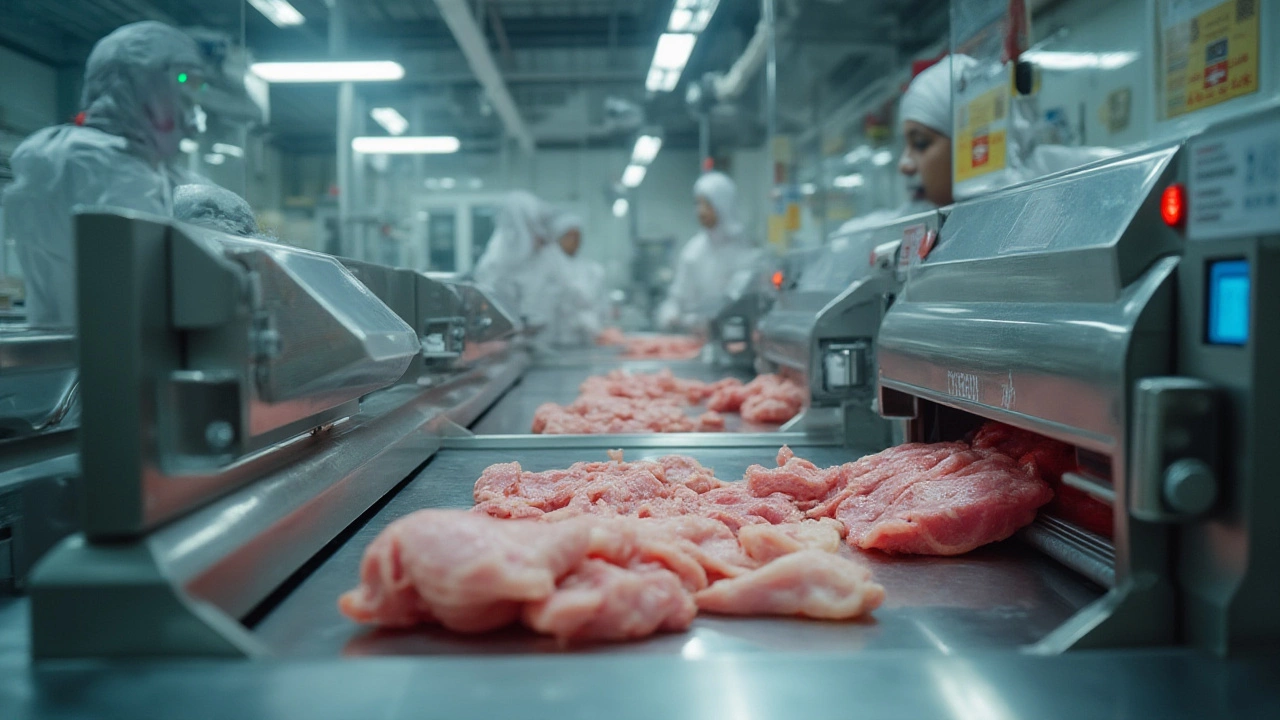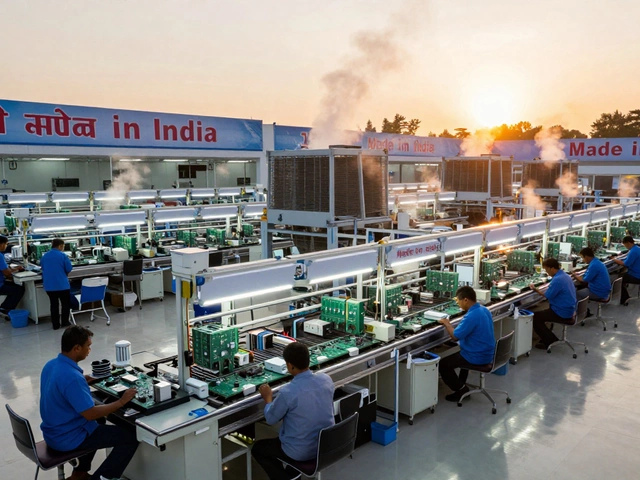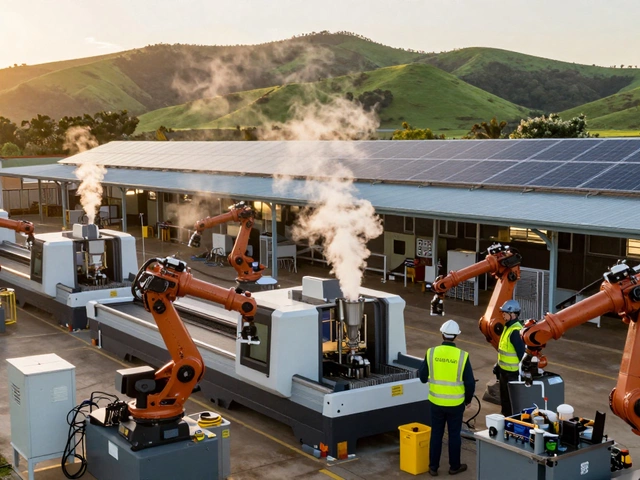Food Processing Units Explained: How Food Factories Work and What You Should Know

Ever wonder what happens to your favorite pack of chips or that frozen pizza before it even hits the supermarket? The secret world behind every bite you take starts inside something called a food processing unit. These places look like huge labyrinths of shiny metal, conveyor belts, giant mixers, whirring blades, and people in hairnets and white boots clutching clipboards. Here's a wild fact: more than 70% of all the food in today's supermarkets, from bread to sauces to juice boxes, has gone through a processing unit at some point. So, when you grab that breakfast cereal or even the simplest tomato ketchup, you’re looking at the result of some seriously organized chaos—and mind-blowing engineering.
Food Processing Unit: The Beating Heart of the Modern Food Chain
Think of a food processing unit as a magical middleman standing between a muddy farm and your clean kitchen shelf. The core job here? Take raw stuff—like wheat, rice, or even slabs of meat—and turn it into something you’d actually want to eat, store, and share. But it’s not just about making food look pretty or last longer. Food units are about safety, consistency, and scale. Every small snack, frozen entrée, or ready-to-cook meal relies on this backbone. One crazy real-world number: India alone has over 37,000 registered food processing units, and the sector employs millions, making it one of the biggest industries around.
Now, picture the whole process as a relay race. The first runner brings in the raw material—grains, fruits, fish, or livestock straight from the field or farm. Next up: cleaning, sorting, and removing anything you’d rather not find in your food (think stones, dirt, or, surprisingly often, the odd feather). After that, machines jump into action—peeling potatoes, husking rice, slicing onions. It gets almost theatrical: dough mixers the size of small cars, chillers that can freeze berries in under a minute, and ovens hotter than lava. In one corner, you might find pasta flying through huge dryers, in another, yogurt gurgling into neat little cups by the thousands every hour.
Let’s hit pause for a second. A report from the Food Safety and Standards Authority of India (FSSAI) suggests about 45% of food wastage happens simply because it spoils before it reaches consumers. Food processing units chop that number down dramatically. They extend the shelf life of food so less gets thrown away, and they make it safer by killing germs with heat, chilling, or clever chemistry. That’s a huge deal in a world worried about hunger and food security.
And it isn’t all about big corporations; small family-owned units make regional delicacies, jams, or pickles using similar tech, albeit on a smaller scale. The rules, though, stay the same for all—maintain hygiene, follow safety standards, and ensure each packet, box, or pouch matches up with strict set formulas. After all, you want every cookie in the pack to taste the same, right?
Inside the Machines: How Food Processing Units Actually Work
Let’s peel back the walls—you’d spot floor-to-ceiling machinery that rarely stops humming. The big stars here are the assembly lines and the processing equipment. From peeling machines that strip thousands of apples in a minute to blenders that get more action than most home kitchens see in a year. It’s intense. Each processing unit fills up with machines specific to what it handles: you’ll never confuse a dairy plant’s pasteurizer with a chocolate tempering machine.
Here’s a taste of the backstage action:
- Cleaning: First, raw materials go through washers or air blowers that shake off dirt and bugs.
- Sorting and Grading: Smart sensors and simple sorters weed out the wonky produce. Only the right size and shape pass through.
- Cutting and Chopping: Automatic knives slice, dice, and cube like chefs on steroids. These machines can handle tons an hour.
- Mixing: Giant mixers make perfect blends, whether for bread dough or masala spice mixes.
- Cooking or Pasteurizing: Ovens, boilers, or blasters use heat (or sometimes cold) to transform or keep things safe from bacteria.
- Packing: In the last step, the machinery gets super precise—each pouch, tin, or bottle gets filled, sealed, and labeled. Robots sometimes box up goodies at the end of the line.
Machines are huge time-savers. One packaging machine can fill and seal about 200 snack packs per minute. But, who runs the show? Trained engineers and operators, yes, but even family units depend on clever local tweaks—like using a repurposed washing machine to churn butter. Neha once told me about her grandfather’s home unit—he tweaked an old water pump to stir pickles in giant vats. Today’s factories use custom-designed stainless-steel gear, but the spirit of invention lives on.

Food Safety, Quality Control, and Why Regulations Matter
Everyone eats. That’s why nothing in a food processing unit is left to chance. Ever wondered why factory bread never molds as quickly as homemade stuff? It’s the strict controls—temperature, humidity, ingredient ratios, even air quality are constantly monitored. The workplace feels half hospital, half science lab. Workers need to suit up like surgeons: hair nets, masks, gloves, boots, and lots of sanitizing.
Most countries, including India, have detailed laws and organizations (think FSSAI, ISO 22000, HACCP) watching every part of the food manufacturing pipeline. These rules aren’t just hoops to jump through. They decide whether your favorite instant noodles are safe, lead-free, and free from contaminants. FSSAI has teams that randomly inspect units, run regular audits, and can even shut a plant down for a single hygiene violation.
Check out this quick chart of what’s checked at every stage:
| Stage | Quality Checks |
|---|---|
| Raw Material Arrival | Looks, weight, moisture, pesticide residues |
| Cleaning/Sorting | Foreign objects, chemical traces |
| Processing | Bacteria counts, temperature, mixing accuracy |
| Packing | Seal quality, labeling accuracy, net weight |
| Dispatch/Storage | Expiry date, transport conditions (cold chain, etc.) |
Allergen control gets super important too. Let’s say you’re allergic to peanuts. Even a tiny trace in a snack can hospitalize someone. That’s why lines get washed thoroughly and separate times are used for different batches. One oversight—and the entire shipment is recalled, costing lakhs or even crores.
Tech plays a key role. Many plants now use smart sensors to flag problems (like broken glass or excess oil) instantly. I once chatted with a plant manager who said their new X-ray unit caught three batches of biscuits with stray tiny metal shards because of a broken blade—no consumer ever had to find out the hard way.
Business Side: Setting Up and Running a Food Processing Unit
So, how does someone actually set up a food unit? It looks glamorous from the outside, but behind the scenes it’s a mess of paperwork, inspections, machinery investments, and long hours. First thing: location matters. You want to be close to the source of your main ingredient—like potato chips near potato farms. Transporting raw material too far can jack up costs and cause spoilage.
Now, the real head scratcher: deciding what to make. Data from FMCG reports reveal that ready-to-eat snacks and dairy products are seeing the fastest growth in the last five years, thanks to busy city lives. But small towns see a boom in pickles, masalas, and papads. Once the product is picked, you gotta sort out licenses. In India, you’ll need FSSAI registration, state and municipal clearances, fire and pollution board permissions, and sometimes even export certifications if you want to reach foreign shelves.
Machinery forms the next big expense. New tech can look tempting (think automation with robots or AI), but older units often survive thanks to well-maintained second-hand equipment. What works for one may not for another. For someone just starting, government subsidies and training programs offer a decent head start—Pradhan Mantri Kisan SAMPADA Yojana for example, supports small processors with low-interest loans and technical help. Hiring the right team is just as crucial. You need food technologists, mechanics, packaging experts, and often, a bunch of multitasking family members pitching in. That’s part of the charm—and the headache—of running any food business in India.
Marketing is a battlefield. Standing out on the shelf next to giant brands like Haldiram’s or Britannia isn’t about flashy packaging alone. Unique flavors, traditional recipes done better, or just a reputation for quality drive loyal customers. Social media and smart branding play a bigger role now—people love seeing behind-the-scenes factory footage or quirky production stories. It’s all about trust and transparency. Word-of-mouth can make or break you in the food world.

Everyday Impact: From the Factory to Your Kitchen Table
Take a second to look around your own kitchen. That bottle of mango juice? There’s a good chance it passed through a processing unit where tens of thousands of mangoes were pulped, pasteurized, and flash-filled by a squad of machines. The paneer for your palak paneer? A dairy unit heated, coagulated, pressed, and diced it before sealing it up for your fridge.
But food processing units aren’t only about convenience—they change entire diets and cultures. Instant noodles and ready-packed rotis weren’t even on the radar for an older generation; now they're household staples from Delhi to Dubai. Long-lasting foods help families reduce waste and enjoy a wider variety. During the pandemic, processed foods basically kept millions going when fresh supplies ran thin. And while critics sometimes warn against overly processed snacks, modern units now craft healthier options too—low-salt, organic, gluten-free, fortified with vitamins and minerals. It’s not all ‘junk’ anymore.
On the flip side, eco-awareness is driving change. Factories race to bring in solar panels, recycle water, use compostable packaging, and cut food waste to almost zero. Here’s a tip: when buying packaged stuff, check for certifications like FSSAI or ISO on the label. It’s your best guarantee what’s inside is the real deal, safely made, and up to standard.
Strange but true: Food processing units aren’t set-and-forget businesses. They’re “living” spaces—constantly tweaking recipes to suit season, price, or customer taste. Even the same chips may taste different next month if the potato variety changes! When Neha shops, she swears by brands that list out how their food is made or share actual photos and not just glossy ads. Turns out, trust really is the most important ingredient behind every processed meal.
The bottom line: Food processing units quietly keep our kitchens stocked, our lunchboxes varied, and our tastes expanding. Next time you open a packet or bottle, just imagine the maze of machines, people, and science behind every bite. Food wouldn’t be the same—or as safe—without them.


